165 results found for 'Red'. |1|2|3|4|5|6|7 | Next | View 100 per page
Low relevance matches: 541 other results may be of interest to you. Show low relevance matches
DNA - The transmission of heritable characteristics from one generation to the next involves DNA and genes ACSSU097 Year 6 Physical Sciences
Electrical Circuits - Electrical energy can be transferred and transformed in electrical circuits and can be generated from a range of sources ACSSU115 Year 7 Earth and Space Sciences
Earth Moon Sun - Predictable phenomena on Earth, including seasons and eclipses, are caused by the relative positions of the sun, Earth and the moon ACSSU229 Year 10 Physical Sciences
Forces and Motion - The motion of objects can be described and predicted using the laws of physics ACSBL029 Year 11 Biodiversity and the interconnectedness of life
Ecosystem dynamics - Models of ecosystem interactions (for example, food webs, successional models) can be used to predict the impact of change and are based on interpretation of and extrapolation from sample data (for example, data derived from ecosystem surveying techniques ACSBL085 Year 12 Heredity and continuity of life
DNA genes and the continuity of life - Frequencies of genotypes and phenotypes of offspring can be predicted using probability models, including Punnett squares, and by taking into consideration patterns of inheritance, including the effects of dominant, autosomal and sex-linked alleles and mu ACSBL090 Year 12 Heredity and continuity of life
Continuity of life on Earth - Natural selection occurs when selection pressures in the environment confer a selective advantage on a specific phenotype to enhance its survival and reproduction; this results in changes in allele frequency in the gene pool of a population ACSBL091 Year 12 Heredity and continuity of life
Continuity of life on Earth - In additional to environmental selection pressures, mutation, gene flow and genetic drift can contribute to changes in allele frequency in a population gene pool and results in microevolutionary change ACSCH056 Year 11 Molecular interactions and reactions
Intermolecular forces and gases - The shapes of molecules can be explained and predicted using three dimensional representations of electrons as charge clouds and using valence shell electron pair repulsion (VSEPR) theory ACSCH073 Year 11 Molecular interactions and reactions
Rates of chemical reactions - Catalysts, including enzymes and metal nanoparticles, affect the rate of certain reactions by providing an alternative reaction pathway with a reduced activation energy, hence increasing the proportion of collisions that lead to a chemical change ACSCH091 Year 12 Equilibrium acids and redox reactions
Chemical equilibrium systems - Over time, physical changes and reversible chemical reactions reach a state of dynamic equilibrium in a closed system, with the relative concentrations of products and reactants defining the position of equilibrium ACSCH096 Year 12 Equilibrium acids and redox reactions
Chemical equilibrium systems - Equilibrium position can be predicted qualitatively using equilibrium constants ACSCH097 Year 12 Equilibrium acids and redox reactions
Chemical equilibrium systems - Acids are substances that can act as proton (hydrogen ion) donors and can be classified as monoprotic or polyprotic depending on the number of protons donated by each molecule of the acid ACSCH098 Year 12 Equilibrium acids and redox reactions
Chemical equilibrium systems - The strength of acids is explained by the degree of ionisation at equilibrium in aqueous solution, which can be represented with chemical equations and equilibrium constants (Ka) ACSCH099 Year 12 Equilibrium acids and redox reactions
Chemical equilibrium systems - The relationship between acids and bases in equilibrium systems can be explained using the Brønsted Lowry model and represented using chemical equations that illustrate the transfer of hydrogen ions ACSCH100 Year 12 Equilibrium acids and redox reactions
Chemical equilibrium systems - The pH scale is a logarithmic scale and the pH of a solution can be calculated from the concentration of hydrogen ions; Kw can be used to calculate the concentration of hydrogen ions from the concentration of hydroxide ions in a solution ACSCH101 Year 12 Equilibrium acids and redox reactions
Chemical equilibrium systems - Acidbase indicators are weak acids or bases where the acidic form is of a different colour to the basic form ACSCH102 Year 12 Equilibrium acids and redox reactions
Chemical equilibrium systems - Volumetric analysis methods involving acidbase reactions rely on the identification of an equivalence point by measuring the associated change in pH, using chemical indicators or pH meters, to reveal an observable end point ACSCH103 Year 12 Equilibrium acids and redox reactions
Oxidation and reduction - A range of reactions, including displacement reactions of metals, combustion, corrosion, and electrochemical processes, can be modelled as redox reactions involving oxidation of one substance and reduction of another substance ACSCH104 Year 12 Equilibrium acids and redox reactions
Oxidation and reduction - Oxidation can be modelled as the loss of electrons from a chemical species, and reduction can be modelled as the gain of electrons by a chemical species; these processes can be represented using half equations ACSCH106 Year 12 Equilibrium acids and redox reactions
Oxidation and reduction - The relative strength of oxidising and reducing agents can be determined by comparing standard electrode potentials ACSCH107 Year 12 Equilibrium acids and redox reactions
Oxidation and reduction - Electrochemical cells, including galvanic and electrolytic cells, consist of oxidation and reduction half reactions connected via an external circuit that allows electrons to move from the anode (oxidation reaction) to the cathode (reduction reaction) ACSCH108 Year 12 Equilibrium acids and redox reactions
Oxidation and reduction - Galvanic cells, including fuel cells, generate an electrical potential difference from a spontaneous redox reaction; they can be represented as cell diagrams including anode and cathode halfequations ACSCH110 Year 12 Equilibrium acids and redox reactions
Oxidation and reduction - Cell potentials at standard conditions can be calculated from standard electrode potentials; these values can be used to compare cells constructed from different materials ACSCH130 Year 12 Structure synthesis and design
Properties and structure of organic materials - Data from analytical techniques, including mass spectrometry, xray crystallography and infrared spectroscopy, can be used to determine the structure of organic molecules, often using evidence from more than one technique ACSPH040 Year 11 Thermal nuclear and electrical physics
Electrical circuits - The energy available to charges moving in an electrical circuit is measured using electric potential difference, which is defined as the change in potential energy per unit charge between two defined points in the circuit ACSPH041 Year 11 Thermal nuclear and electrical physics
Electrical circuits - Energy is required to separate positive and negative charge carriers; charge separation produces an electrical potential difference that can be used to drive current in circuits ACSPH061 Year 11 Linear Motion and Waves
Linear motion and force - Representations, including graphs and vectors, and/or equations of motion, can be used qualitatively and quantitatively to describe and predict linear motion ACSPH064 Year 11 Linear Motion and Waves
Linear motion and force - Momentum is a property of moving objects; it is conserved in a closed system and may be transferred from one object to another when a force acts over a time interval ACSPH065 Year 11 Linear Motion and Waves
Linear motion and force - Energy is conserved in isolated systems and is transferred from one object to another when a force is applied over a distance; this causes work to be done and changes to kinetic and/or potential energy of objects ACSPH073 Year 11 Linear Motion and Waves
Waves - A mechanical system resonates when it is driven at one of its natural frequencies of oscillation; energy is transferred efficiently into systems under these conditions ACSPH076 Year 11 Linear Motion and Waves
Waves - A wave model explains a wide range of lightrelated phenomena including reflection, refraction, total internal reflection, dispersion, diffraction and interference; a transverse wave model is required to explain polarisation ACSPH021 Year 11 Thermal nuclear and electrical physics
Heating processes - Change of state involves internal energy changes to form or break bonds between atoms or molecules; latent heat is the energy required to be added to or removed from a system to change the state of the system


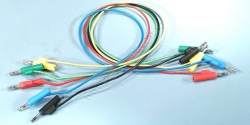
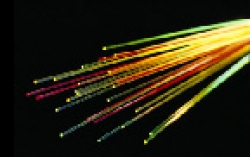

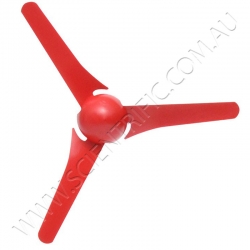

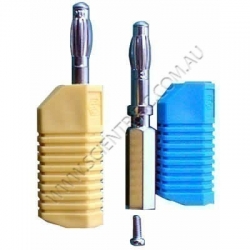
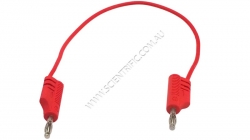
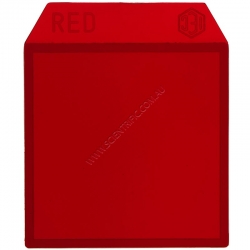

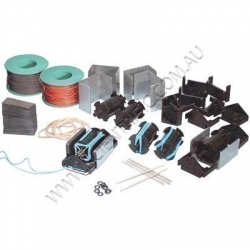
165 results found for 'Red'. |1|2|3|4|5|6|7 | Next | View 100 per page
Low relevance matches: 541 other results may be of interest to you. Show low relevance matches
Curriculum resources related to 'Red'
ACSSU184 Year 10 Biological SciencesDNA - The transmission of heritable characteristics from one generation to the next involves DNA and genes ACSSU097 Year 6 Physical Sciences
Electrical Circuits - Electrical energy can be transferred and transformed in electrical circuits and can be generated from a range of sources ACSSU115 Year 7 Earth and Space Sciences
Earth Moon Sun - Predictable phenomena on Earth, including seasons and eclipses, are caused by the relative positions of the sun, Earth and the moon ACSSU229 Year 10 Physical Sciences
Forces and Motion - The motion of objects can be described and predicted using the laws of physics ACSBL029 Year 11 Biodiversity and the interconnectedness of life
Ecosystem dynamics - Models of ecosystem interactions (for example, food webs, successional models) can be used to predict the impact of change and are based on interpretation of and extrapolation from sample data (for example, data derived from ecosystem surveying techniques ACSBL085 Year 12 Heredity and continuity of life
DNA genes and the continuity of life - Frequencies of genotypes and phenotypes of offspring can be predicted using probability models, including Punnett squares, and by taking into consideration patterns of inheritance, including the effects of dominant, autosomal and sex-linked alleles and mu ACSBL090 Year 12 Heredity and continuity of life
Continuity of life on Earth - Natural selection occurs when selection pressures in the environment confer a selective advantage on a specific phenotype to enhance its survival and reproduction; this results in changes in allele frequency in the gene pool of a population ACSBL091 Year 12 Heredity and continuity of life
Continuity of life on Earth - In additional to environmental selection pressures, mutation, gene flow and genetic drift can contribute to changes in allele frequency in a population gene pool and results in microevolutionary change ACSCH056 Year 11 Molecular interactions and reactions
Intermolecular forces and gases - The shapes of molecules can be explained and predicted using three dimensional representations of electrons as charge clouds and using valence shell electron pair repulsion (VSEPR) theory ACSCH073 Year 11 Molecular interactions and reactions
Rates of chemical reactions - Catalysts, including enzymes and metal nanoparticles, affect the rate of certain reactions by providing an alternative reaction pathway with a reduced activation energy, hence increasing the proportion of collisions that lead to a chemical change ACSCH091 Year 12 Equilibrium acids and redox reactions
Chemical equilibrium systems - Over time, physical changes and reversible chemical reactions reach a state of dynamic equilibrium in a closed system, with the relative concentrations of products and reactants defining the position of equilibrium ACSCH096 Year 12 Equilibrium acids and redox reactions
Chemical equilibrium systems - Equilibrium position can be predicted qualitatively using equilibrium constants ACSCH097 Year 12 Equilibrium acids and redox reactions
Chemical equilibrium systems - Acids are substances that can act as proton (hydrogen ion) donors and can be classified as monoprotic or polyprotic depending on the number of protons donated by each molecule of the acid ACSCH098 Year 12 Equilibrium acids and redox reactions
Chemical equilibrium systems - The strength of acids is explained by the degree of ionisation at equilibrium in aqueous solution, which can be represented with chemical equations and equilibrium constants (Ka) ACSCH099 Year 12 Equilibrium acids and redox reactions
Chemical equilibrium systems - The relationship between acids and bases in equilibrium systems can be explained using the Brønsted Lowry model and represented using chemical equations that illustrate the transfer of hydrogen ions ACSCH100 Year 12 Equilibrium acids and redox reactions
Chemical equilibrium systems - The pH scale is a logarithmic scale and the pH of a solution can be calculated from the concentration of hydrogen ions; Kw can be used to calculate the concentration of hydrogen ions from the concentration of hydroxide ions in a solution ACSCH101 Year 12 Equilibrium acids and redox reactions
Chemical equilibrium systems - Acidbase indicators are weak acids or bases where the acidic form is of a different colour to the basic form ACSCH102 Year 12 Equilibrium acids and redox reactions
Chemical equilibrium systems - Volumetric analysis methods involving acidbase reactions rely on the identification of an equivalence point by measuring the associated change in pH, using chemical indicators or pH meters, to reveal an observable end point ACSCH103 Year 12 Equilibrium acids and redox reactions
Oxidation and reduction - A range of reactions, including displacement reactions of metals, combustion, corrosion, and electrochemical processes, can be modelled as redox reactions involving oxidation of one substance and reduction of another substance ACSCH104 Year 12 Equilibrium acids and redox reactions
Oxidation and reduction - Oxidation can be modelled as the loss of electrons from a chemical species, and reduction can be modelled as the gain of electrons by a chemical species; these processes can be represented using half equations ACSCH106 Year 12 Equilibrium acids and redox reactions
Oxidation and reduction - The relative strength of oxidising and reducing agents can be determined by comparing standard electrode potentials ACSCH107 Year 12 Equilibrium acids and redox reactions
Oxidation and reduction - Electrochemical cells, including galvanic and electrolytic cells, consist of oxidation and reduction half reactions connected via an external circuit that allows electrons to move from the anode (oxidation reaction) to the cathode (reduction reaction) ACSCH108 Year 12 Equilibrium acids and redox reactions
Oxidation and reduction - Galvanic cells, including fuel cells, generate an electrical potential difference from a spontaneous redox reaction; they can be represented as cell diagrams including anode and cathode halfequations ACSCH110 Year 12 Equilibrium acids and redox reactions
Oxidation and reduction - Cell potentials at standard conditions can be calculated from standard electrode potentials; these values can be used to compare cells constructed from different materials ACSCH130 Year 12 Structure synthesis and design
Properties and structure of organic materials - Data from analytical techniques, including mass spectrometry, xray crystallography and infrared spectroscopy, can be used to determine the structure of organic molecules, often using evidence from more than one technique ACSPH040 Year 11 Thermal nuclear and electrical physics
Electrical circuits - The energy available to charges moving in an electrical circuit is measured using electric potential difference, which is defined as the change in potential energy per unit charge between two defined points in the circuit ACSPH041 Year 11 Thermal nuclear and electrical physics
Electrical circuits - Energy is required to separate positive and negative charge carriers; charge separation produces an electrical potential difference that can be used to drive current in circuits ACSPH061 Year 11 Linear Motion and Waves
Linear motion and force - Representations, including graphs and vectors, and/or equations of motion, can be used qualitatively and quantitatively to describe and predict linear motion ACSPH064 Year 11 Linear Motion and Waves
Linear motion and force - Momentum is a property of moving objects; it is conserved in a closed system and may be transferred from one object to another when a force acts over a time interval ACSPH065 Year 11 Linear Motion and Waves
Linear motion and force - Energy is conserved in isolated systems and is transferred from one object to another when a force is applied over a distance; this causes work to be done and changes to kinetic and/or potential energy of objects ACSPH073 Year 11 Linear Motion and Waves
Waves - A mechanical system resonates when it is driven at one of its natural frequencies of oscillation; energy is transferred efficiently into systems under these conditions ACSPH076 Year 11 Linear Motion and Waves
Waves - A wave model explains a wide range of lightrelated phenomena including reflection, refraction, total internal reflection, dispersion, diffraction and interference; a transverse wave model is required to explain polarisation ACSPH021 Year 11 Thermal nuclear and electrical physics
Heating processes - Change of state involves internal energy changes to form or break bonds between atoms or molecules; latent heat is the energy required to be added to or removed from a system to change the state of the system
Products related to 'Red'

LED Red with 200mm Cables Pack of 10
Red LED soldered to 200mm of red and black teflon insulated copper wire, the bare wire (cable) ends have been soldered to prevent fraying. To prevent shorting the soldered LED/wire joints are protected with heat shrink insulation.
Specifications:
1.8 to 2.2V @ 20mA
Sold a...
Order code: SC33001


Whiteboard Markers Auspen 12 Red Bullet Tipped
Only 2 packs still available
A box of 12 red, bullet tipped whiteboard markers.
These high quality, Xylene free, Australian designed AusPen® whiteboard markers offer both financial savings and environmental advantages because they are durable, refillable and have replaceable nibs to create less waste and ...
Order code: SC2108
Whiteboard Marker Auspen - Bottle of Red Refill Ink
23ml bottle of red refill ink for Auspen whiteboard markers.
Black, blue, orange, green and purple ink refills are also available.
Order code: SC2122

Alligator Clip to Banana Socket Red Pack of 10
Moulded of red plastic this well built alligator clip has an encased 4mm socket to accept 4mm banana plugs. As the banana socket and the jaws are electrically connected this product could be described as an alligator to banana plug adaptor. The jaws are very well tension...
Order code: SC92050

IEC Cable 600mm Red 4mm Banana To Banana Stackable
IEC 600mm RED CABLE WITH 4mm STACKABLE BANANA PLUGS
A quality IEC 600mm red cable terminated in 4mm stackable banana plugs at each end.
Order code: PA0700-004
IEC Filter Colour 100x100mm Primary Red Unmounted
IEC UNMOUNTED COLOURED FILTER - PRIMARY RED
An unmounted 100 x 100mm square acetate filter coloured Primary Red.
Order code: HL1882-002

Fluorescent Fibre Red 1mmx500mm
Made of polystyrene, it absorbs short wavelength energy and emits it at a longer wavelength. The emitted light is incredibly vivid and incredibly bright and is of narrow wavelength. It creates a fantastic display even in daylight.
Order code: IF-810087

Fluorescent Fibre Red 1.5mmx300mm
Made of polystyrene, it absorbs short wavelength energy and emits it at a longer wavelength. The emitted light is incredibly vivid and incredibly bright and is of narrow wavelength. It creates a fantastic display even in daylight.
Order code: IF-810088

KidWind Red Blade Set
KIDWIND RED BLADE SET
These 200mm diameter wind turbine blades are optimised to spin at very high RPMs. The blades fit on any DC generator or motor with a 2mm driveshaft. Because they are optimised to spin at very high RPMs they produce high voltage (5-6 volts) with the K...
Order code: KW-RED


Molymod Oxygen Red 1 Hole 20mm
20mm MOLYMOD OXYGEN ATOM 1 HOLE
A pack of 10 red oxygen atoms 20mm diameter and with one hole denoting a double bonded oxygen atom.
The smaller diameter represents the shorter atomic radius.
A quality, genuine Molymod® atom fully compatible with other Molymod® pr...
Order code: MA-103-10
Molymod Oxygen Red 1 Hole 23mm
23mm MOLYMOD OXYGEN ATOM 1 HOLE
A pack of 10 red oxygen atoms 23mm diameter and with one hole. This univalent atom is used for models where there is a carboxyl group and the other oxygen is divalent but both are resonant, sharing the hydrogen.
A quality, genuine Molymo...
Order code: MA-121-10
Molymod Oxygen Red 2 Holes 23mm 105 Degrees - Pack of 10
23mm MOLYMOD OXYGEN ATOM 2 HOLES
A pack of 10 red Oxygen atoms 23mm diameter and with 2 holes angled at 105°.
This atom can be used in place of the 4 hole version if you do not intend to use the lone pair electron paddles.
A quality, genuine Molymod® atom fully comp...
Order code: MA-200-10
Molymod Oxygen Red 2 Holes 17mm Linear
17mm MOLYMOD OXYGEN ATOM 2 HOLES LINEAR
A pack of 10 red oxygen atoms 17mm diameter and with 2 holes angled at 180° (linear).
A quality, genuine Molymod® atom fully compatible with other Molymod® products.
Order code: MA-211-10
Molymod Oxygen Red 2 Holes 23mm Linear
23mm MOLYMOD OXYGEN ATOM 2 HOLES LINEAR
A pack of 10 red oxygen atoms 23mm diameter and with 2 holes angled at 180° (linear).
A quality, genuine Molymod® atom fully compatible with other Molymod® products.
Order code: MA-223-10
Molymod Oxygen Red 2 Holes 20mm 140 Degrees
20mm MOLYMOD OXYGEN ATOM 2 HOLES
A pack of 10 red oxygen atoms 20mm diameter and with 2 holes angled at 140° used when modelling silicates such as quartz.
A quality, genuine Molymod® atom fully compatible with other Molymod® products.
Order code: MA-240-10
Molymod Oxygen Red 4 Holes 23mm Tetrahedral
23mm MOLYMOD OXYGEN ATOM 4 HOLES TETRAHEDRAL
A pack of 10 red oxygen atoms 23mm diameter and with 4 holes angled at 109° (tetrahedral). Used mainly to model water/ice molecules and included in most Molymod® student and teacher sets.
A quality, genuine Molymod® prod...
Order code: MA-402-10

IEC Alligator Clip 4mm Insulated Red Shank
IEC ALLIGATOR CLIP 4mm RED INSULATED SHANK
A pack of 10 quality alligator clips with red insulated shanks that fit a 4mm banana plug. Alternatively, wire can be soldered or connected via the screw terminal to the alligator clip.
Overall length 50mm.
Order code: PA0160-201

IEC Banana Plug IEC 4mm 3 Way Stackable Red
IEC BANANA PLUG 4mm 3 WAY STACKABLE RED
Quality stackable banana plug designed by IEC to be connectable to wires in 3 different ways: either soldering, threading and wrapping, or by screwing in place. Once wired simply push the metal body into the plastic case until it cl...
Order code: PA0208-004

IEC Cable 300mm Red 4mm Banana To Banana Stackable
IEC 300mm RED CABLE WITH 4mm STACKABLE BANANA PLUGS
A quality IEC 300mm red cable terminated in 4mm stackable banana plugs at each end.
Order code: PA0695-004
IEC Cable 1200mm Red 4mm Banana to Banana Stackable
IEC 1200mm RED CABLE WITH 4mm STACKABLE BANANA PLUGS
A quality IEC 1200mm red cable terminated in 4mm stackable banana plugs at each end.
Order code: PA0705-004
IEC Electronics Kit LED Red
IEC ELECTRONICS KIT RED LED
A red LED on a 17x38mm base with 2mm sockets for connection as supplied in the EM1764-001 IEC Basic Electronics Kit.
Order code: PA1764-170
IEC Induction Kit Coil Bobbin and Front Red
IEC HODSON INDUCTION KIT EMPTY RED COIL BOBBIN AND FRONT
An empty red coil bobbin with front plate compatible with the EM1973-001 IEC Hodson Induction Kit. The bobbin can be wound by students to create their own secondary coils.
Order code: PA1973-031

IEC Light Box Filter Primary Red 50mm
IEC HODSON LIGHT BOX PRIMARY RED FILTER
A replacement TRANSPARENT solid Primary Red filter to fit the HL2060-001 IEC Hodson Light Box and Optical Set.
Older cardboard mount slide filters previously supplied with IEC...
Order code: PA2060-066

IEC Light Box Card Primary Red 50mm
IEC HODSON LIGHT BOX PRIMARY RED PLATE
A replacement OPAQUE solid Primary Red colour plate to fit the HL2060-001 IEC Hodson Light Box and Optical Set.
Older cardboard mount slide cards previously supplied with IEC H...
Order code: PA2060-076

IEC Electric Motor Kit Hodson Roll of Wire Red
IEC HODSON MOTOR KIT ROLL OF RED WIRE
A replacement small reel of 0.5mmD red bell wire for winding rotor coils with the EM2193-201 IEC Hodson Motor Kit.
Order code: PA2193-212


165 results found for 'Red'. |1|2|3|4|5|6|7 | Next | View 100 per page


